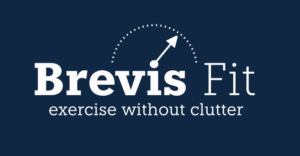Most frequent questions and answers
The short answer is yes. And while it is best to try out the program, we will explain down below.
In exercise, the most result-producing factor is the accumulated level of fatigue in the muscles. If the accumulated level of fatigue is deep enough (stimulus), the body will adapt and improve (recovery and growth). It usually takes between 4 – 7 days for the muscles to recover. By repeating this process of stimulus-recovery, the same stressor used previously will feel much less challenging.
We create fatigue by providing stress in the form of resistance. We place the resistance against the movement that our muscles produce. This resistance has to be high enough so that we reach the level of deep fatigue inside the optimum time requirements (30 – 120 seconds). This means that each muscle has to be active for at least 30 seconds and at most 120 seconds. And this deep level of fatigue has to be reached during that interval.
To activate and stimulate the bulk of our muscles, we require at least 1 pulling, 1 pushing, and 1 squatting movement (3 exercises). In our workouts, we do between 6 – 10. Which accumulates to around 10 – 15 minutes of pure high-intensity tension, being put on your whole musculature.
In each workout, we perform between 3 – 10 exercises, depending on your exercise performance proficiency. Each exercise is performed for around 90 seconds non-stop. Our target is to fatigue the muscles, so the instructor will give you constant guidance to keep exerting more and more intensely while keeping your body aligned correctly. The goal during the 90 seconds is to fatigue your muscles as deeply as possible. Once the 90 seconds are completed, we move to the next exercise. The workout is finished after we perform each exercise (note we perform each exercise only once).
Our exercises focus on the theory of High-Intensity Training (do not confuse this with High-Intensity Interval Training) in combination with the alternative exercise protocols, such as static contractions. You will perform very intense muscular contractions, but you will do so in the safest angles or ranges of motion. This will assure that you are put in the safest position in regards to your joints and ligaments, while simultaneously being able to provide your muscle the most intense and fatiguing stimulus.
Exercises are selected based on your individual consultation with your exercise instructor. Based on your health and body composition goals, the instructor will select around 6 – 10 exercises, which you will perform during a workout. In the beginning, some workouts will include fewer exercises, in order for you to learn the correct positions. After 3 – 5 weeks, you will be very proficient at putting yourself in the correct posture to perform each exercise. There is a vast array of exercises available to perform. Workouts are usually dominant in exercises that target the big musculature, such as your back, arms, shoulders, and legs. Based on your requirements and desires, we do add specific isolation exercises, involving smaller muscle groups such as the neck and wrist muscles as well as the very important stabilizers around your shoulders and hips.
Each session is individually supervised in real-time. This means that a trainer only supervises one trainee at a time. As of today, we do not provide group activities.
When doing exercise without the aid of hormonal assistance (or even implants), it is highly unlikely for you to one day wake up and see too many muscles in the mirror. Exercise primarily improves your strength and stress resistance, while muscular growth is a second order adaptation and is (predominantly) genetically determined. Still, if the growth of muscles would be too rapid, one can easily taper down the intensity and the exertion one uses while performing the exercise, so as to reduce the level of fatigue accumulated and consequently lower the level of adaptation.
